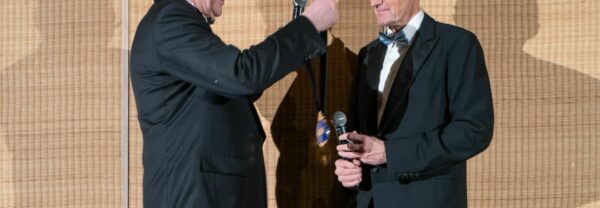The EAU is celebrating its 50th year!
The EAU is celebrating this milestone in the period between its two Annual Congresses - EAU22 (Amsterdam) and EAU23 (Milan).

Delegates in Amsterdam won’t be able to miss the fact that the European Association of Urology is entering its fiftieth year. From the opening ceremony onward, special attention will be drawn to this golden jubilee.
The first steps to create the EAU were taken in 1972, with the final constituent assembly taking place in Amsterdam in 1973. Another major milestone for the EAU’s history is its first congress, which took place in 1974. As a result, the EAU decided to celebrate its golden jubilee in the period between EAU22 in Amsterdam and EAU23 in Milan, rather than selecting a single date to mark the occasion.
Activities in Amsterdam
During the opening ceremony of EAU22 (Friday, 1 July, 18:00-19:45) the anniversary will be officially kicked off. The anniversary logo will be unveiled, and the ceremony will conclude with special attention to the occasion and some of the people who made it possible.
During the congress, delegates can visit the Congress History Area, in the Green Area, for a video presentation on the five decades of the EAU. Not only will it feature highlights from the EAU’s history but also place those events in the context of contemporary events and developments. In addition, the EAU History Office’s special session will feature guest speaker and former Secretary-General of the EAU, Prof. Frans Debruyne for his personal take on the EAU’s 50 years of excellence in urology (Saturday, 2 July 11:00-13:30).
After EAU22 winds down, the EAU will continue to fly its anniversary logos until the end of EAU23. In addition, regular updates on social media will offer highlights from each of the fifty years as we approach EAU23. In every edition of EUT between congresses we will examine another episode of the EAU’s long history.
See you in Milan!
The end of the anniversary celebrations will be marked at EAU23 with a special Congress on the History of Urology and the presentation of a special book, tentatively called EAU:50. The book will present an overview of the EAU’s history so far, but also act as a “State of the Association” and reflect on how far the association has come and where it is going.
The 7th International Congress on the History of Urology marks the first such event since its sixth iteration held in Munich in 2016 (also in conjunction with that year’s Annual EAU Congress). It will be held on the first day of EAU23 and free to attend for all EAU23 delegates. More details to be announced on www.eau23.org and future editions of European Urology Today.
Where did it all begin?
Selecting a single date to commemorate the founding of a complex international association like the EAU can be a challenge. The process of establishing the association took place over two years, and the first congress took place later still. Already in 1970, prominent European urologists discussed the need for establishing a European society, a continent-wide counterweight to the American Urological Association, a much older (1902) and established society at the time. The first concrete steps in the foundation of the EAU took place in the wings of the 66th Congress of the Association Française d’Urologie (AFU) in September 1972. Prof. Giorgio Ravasini (1905-1992), chair of urology in Padua assembled ten urologists from across Europe for a lunch at the urology department of Hôpital Necker in Paris.
It was at this lunch that the ambitions for what would become the EAU were discussed and put on paper: the society would be headquartered in Switzerland, there would be no presidency but a committee and it would be up to Prof. Willy Gregoir (1920-2000) of Brussels to draw up the statutes. Plans were also made to establish a journal, European Urology.
The next major step in the foundation of the society was in November 1972, at the ‘Nouvel Hôtel’ in Zurich. (NB: If any reader knows exactly which hotel this could be, please let us know! eut@uroweb.org) Attending the meeting were Profs. Alken, Atanassov-Sophia, Badenoch, Balogh, Couvelaire, Gregoir, Marberger, Mayor, Mebel, Petkovic, Puigvert, Ravasini, Wesolowski and Zvara, representing departments from both sides of the iron curtain. Indeed, the make-up and character of the future society was debated: membership based on merit, “democratic” principles or as a representation of the continent. In the end, scientific merit would be considered the most important and the EAU would start as a small, select club of several hundred members. Prof. Gregoir was elected as Secretary General.
On 3 and 4 July, 1973 the Hotel Schiller in Amsterdam was the site of the final constituent assembly. This took place during the 16th congress of the Société Internationale d’Urologie (SIU).The statutes were accepted and the first list of 259 members was submitted for approval. The first European congress was scheduled to take place in Padua, Italy in September 1974. The EAU was off to a flying start in its first decade!


